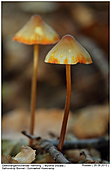

It was clear that I would have difficulty achieving this goal in a single shot, so instead I made three captures: one focused on the front (top), one on the middle (center), and one on the back (bottom).

With the poppy core mounted on a paper clip, I decided to shoot an image showing the entire core in focus.
#PHOTOSTACK MACRO ISO#
Photo: 85mm macro, 20 seconds at f/64 and ISO 100, tripod mounted Then, I placed the poppy and its improvised stand upright on a black card underneath a light tent. So, one-handed, I found a paper clip and bent it to make a small “stand.” I pushed the stem of the poppy onto the open end of the paper clip – and it fit perfectly. I didn’t dare put the poppy core down on a table because it would have immediately fallen apart. Quickly, before the breeze could blow the construction apart, I gently cut off its stem, and brought it inside to my studio with the idea of photographing the core close-up. In my garden, I found a perfect poppy core that had formed after the poppy’s petals had fallen off. Whichever method you choose, bear in mind that the more focal points you shoot, and the more images with differing focal points you bring to the party, the more successful your stacking is likely to be.
#PHOTOSTACK MACRO SOFTWARE#
The combination of images can be accomplished by hand-painting to select the areas you want or using automated layer alignment and stacking software (see text box below). But bear in mind that stopping down a lens comes with some downsides: optically your lens may not perform best at its smallest aperture, and when the aperture is small you can’t use a shutter speed fast enough to stop motion.Īn approach that often can surmount these obstacles is to use focus stacking: shooting at a number of different focal points and combining the images in Photoshop to create a hyper-focal image that has an extended area that is in focus. Because focus is inherently shallower as you get closer to your subject, slight variations of distance between camera and subject throw you out of focus very quickly, and even fully-stopped down you may not have enough depth-of-field for your entire photo to be in focus.Ĭertainly, stopping your lens down to its smallest aperture, observing whether you have the in-focus areas you want, and seeing if there is any way to position the camera to improve the amount that is in-focus is a good way to start. Since “fussy” is not a technical term, let me explain. The closer you get in macro flower photography, the fussier focus gets. Editor’s note: This excerpt first appeared in photographer and author Harold Davis’ recent Focal Press book, Photographing Flowers: Exploring Macro Photography with Harold Davis.


 0 kommentar(er)
0 kommentar(er)
